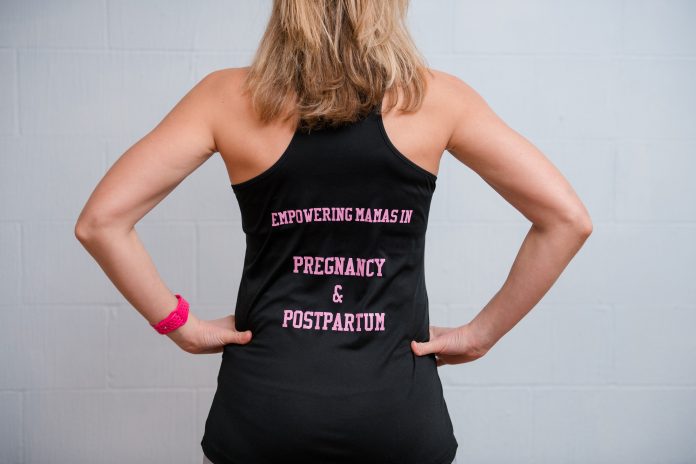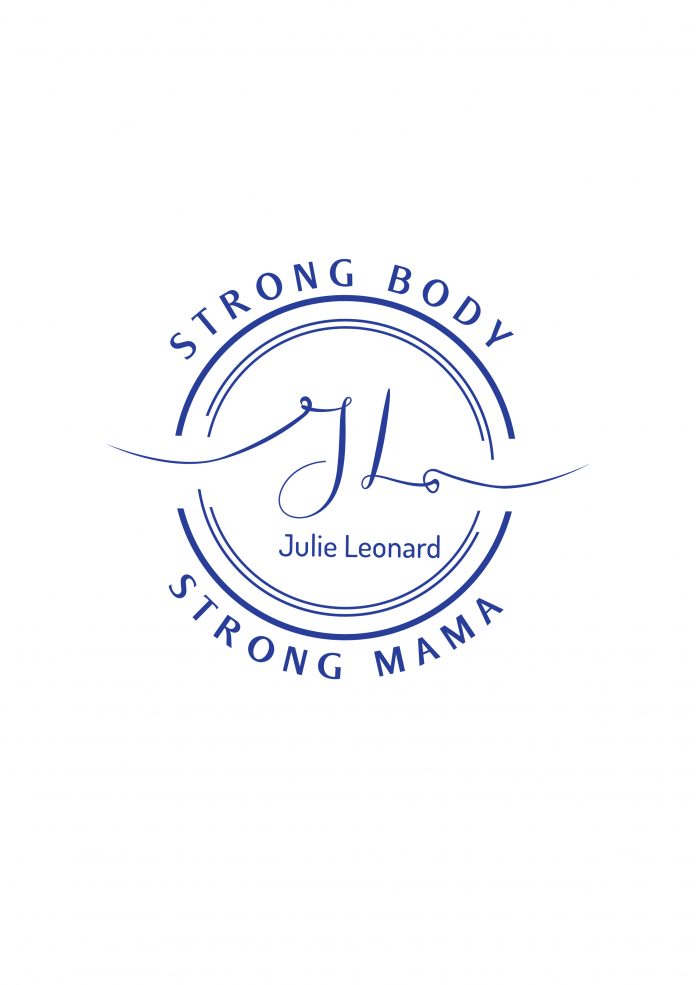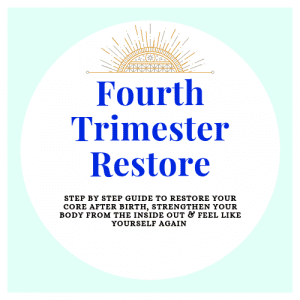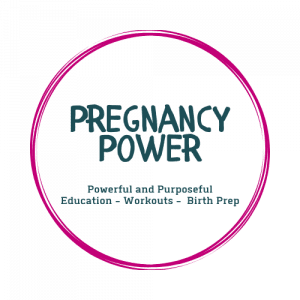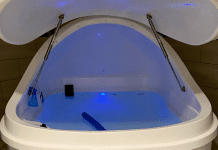Peeing my pants. Smooshy belly. Weak core.
These are just some of the unpleasant side-effects I’ve dealt with three times now after having each of my children. The difference this time around is that I’ve decided to do something about it. I had my last baby via c-section at the end of October, and at the end of December I started working with Prenatal and Postpartum Fitness Coach, Julie Leonard of Strong Body, Strong Mama.
Before you have a baby they tell you to keep working out! Use a belly binder! Get back to your fitness routine at 6 weeks! But this isn’t the whole picture. Many of us experience the above symptoms, and while your OB may clear you to return to physical activity, the reality is, your body just simply may not be ready. And that’s where Julie comes in. She helps pregnant and postpartum women strengthen their core to allow for better labor/delivery and to heal and connect with their core after baby is born.
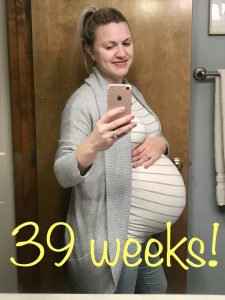
I’ve learned SO much from Julie, so I wanted to sit down with her and ask a bunch of questions that were on my mind and that came from friends of mine once they found out I was working with her. Hopefully this will answer some of the questions you may have as well!

Q. First things first – what is (and isn’t) a prenatal and postpartum fitness specialist?
A. The fitness world isn’t super regulated when it comes to coaching or personal training. Unfortunately, most personal training certifications do not cover pregnancy/postpartum considerations, changes, and core/pelvic floor health. A pre- and postnatal fitness specialist is trained to work with expecting and new moms and support them as they grow through all the changes of pregnancy, birth, and postpartum. Core and pelvic health is super important for lifelong health of the mother. Most trainers have no clue how to work with this special population. A pre- and postnatal fitness specialist is not a pelvic floor therapist. Some coaches (like me) have continued education and experience in pelvic health but not all pre/postnatal coaches do. In an ideal world, pre- and postnatal coaches would be working in collaboration with pelvic floor therapists and other health professionals taking care of the childbearing moms.
Q. I have a fairly significant ab separation (diastasis recti), and I’m about 3 months post-partum with my third. Would you consider this normal? Or am I an outlier?
A. Diastasis recti is completely normal in pregnancy. Every mother that carries a baby full term will get ab separation to some degree during pregnancy. In a lot of cases, the body will naturally heal itself within the first 8 weeks postpartum. But about ⅓ of moms will still have a diastasis recti at 12 months postpartum. When we see a significant ab separation after the 8 week mark, we want to make sure we address the issue. There is a lot of healing that will happen naturally in those first 8 weeks and the research shows that no further improvement will happen at that point without intervention. A lingering diastasis recti can lead to a bunch of other issues like a weakened core, low back pain, pelvic floor dysfunctions and more. To answer your question, yes this is very common. Is it normal? That’s a hard question to answer. It depends. The research is not clear on what exactly causes diastasis recti but we know that there are certain things that we can do in pregnancy to help minimize the severity of the separation. In your particular case, I would call your diastasis recti “functional” which means that you are now able to manage your intra-abdominal pressure by connecting to your deep core during movements. Your core strength has improved tremendously over the last couple weeks and you are able to generate core strength and stability when needed. Healing and strengthening a diastasis recti could take months to years in some cases. Persistence, patience, and doing the right type of exercises are key to achieve full recovery.

Q. What are a few quick tips you would have given me if I had come to you when I was still pregnant?
A. Great question! The best time to start prepping your body for postpartum is IN pregnancy! First off, I would have given you education on your core and pelvic floor. Learning about your deepest layers can not only help you have an easier labor, but also help speed up your postpartum recovery. I would have taught you my Deep Core Connection Method which helps minimize diastasis recti by learning how to coordinate your breath with your deep core and pelvic floor muscles. I also would have shown you exercise modifications to help reduce the load on your abdomen to minimize diastasis recti. And my favorite tip for pregnancy, ask yourself these 3 questions before choosing exercises:
1. Can I do this exercise?
2. Should I do this exercise?
3. What are the risks vs rewards of this exercise?
In a lot of cases, women need more guidance and education about their core and pelvic floor to be able to answer these questions correctly. This is where I can be helpful!
Q. Anything you’d say are absolute no-no’s during pregnancy in terms of fitness?
A. Everybody will respond differently to certain movements in pregnancy so it’s hard to say “absolute” no-no’s. Some people might be able to do higher impact exercise (like running) for a longer period of time while others might start having symptoms (urine leakage, pressure etc.) sooner. Some people might be able to do planks and crunches for a couple of months while others might experience coning in their abdomen or feeling of heaviness in the vagina while performing these types of movements. The right thing to do is to ask yourself lots of questions. Are you seeing any doming/coning while performing the movement? Are you leaking during the exercise? Are you feeling heaviness/pressure in your vagina? Are you feeling any pain? There are so many factors to consider here that it’s really hard to have a yes and no list. This is why it is so important to work with a qualified Pre and Postnatal Fitness coach. Having said that, what I generally recommend is to modify high impact exercise (like running, jumping, burpees) starting in the second trimester as well as modifying exercises that would put more pressure on the abdomen or pelvic floor (like planks, push-ups, sit-ups, crunches, heavy overhead exercises, etc.). A Pre and Postnatal Fitness Coach will be able to guide you with exercise modifications throughout your pregnancy.
Q. What about postpartum no-no’s?
A. The answer to this question is very similar to the question about pregnancy no-no’s. Again, everybody will heal differently after birth and there are so many factors we need to consider to answer this question. How was your birth experience? Did you have any tearing? Did you have a cesarean birth? Are you leaking urine or stool? What I generally recommend is to spend the first 6-8 weeks rehabbing your core and pelvic floor and slowly introducing functional movements. I also encourage all my moms to see a Pelvic Floor Therapist so we can get more information about their pelvic floor, scar tissue or tissue healing progress post birth. My approach in the early postpartum weeks is to stay on the safer side to reduce potential damage by avoiding high impact exercise, crunches/sit-ups, planks, or heavy lifting. Again, I am a huge advocate of spending 6-8 weeks building a strong foundation from the inside out. Growing a baby for 9 months and giving birth is no joke. Moms need time to heal and restore their bodies before they jump back into their regular activities. As far as running goes, I don’t recommend hitting the pavement until at least 3 months postpartum and after having spent the time properly rehabbing the body.
Q. You and I have talked a few times about how diastasis recti is kind of a ‘buzzword” right now in the postpartum world. But it’s definitely a real thing! (I should know). SO, how do you know if the diastasis is causing the mommy pooch, or if its just excess stretch/weight gain?
A. So many things could be causing the mommy pooch. First of all, growing a baby will stretch your skin. I think we need to consider how society puts unrealistic expectations on new moms. Why do we need to look like we never had a baby at 3 weeks postpartum? Having extra fat and stretched skin is completely normal after giving birth. Having said that, posture, bad breathing habits, weak core, or tightness around the abdomen could all lead to the famous mommy pooch. Having a diastasis recti doesn’t necessarily mean you will have a mommy pooch but in some cases it does. Getting checked by a Pelvic Floor Therapist or qualified Pre/Postnatal Fitness Coach would be the best approach to determine what is going on. But please know that curated or fake images (hello perfect lighting, angle, and high waisted leggings) on Instagram don’t reflect reality.
Q. As mentioned before, my diastasis is fairly significant. Will my belly ever be flat again? Or will there be a point when we figure out that my abs won’t heal with exercise alone?
A. I do think your belly could be flat again. You are 3 months postpartum (with 3 small kids) which is in my opinion completely normal to have a little pooch. Breastfeeding, nutrition, sleep deprivation, stress, and exercise are all components we should be looking at here. Again, I think the focus in the first few months postpartum shouldn’t be on weight loss or getting our body back but on building a strong foundation for lifelong health. Continuing to heal and restore your core strength should be a priority over the next couple months and I’m pretty sure your belly will look differently at a year postpartum.
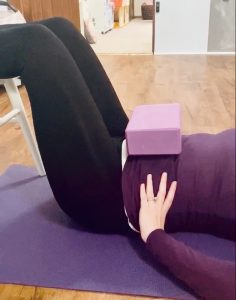
Q. And finally, just mom-to-mom, what are your suggestions for getting back into the routine of working out postpartum? You have three kiddos and are in amazing shape! How do you do it?
A. Haha. I chuckled on this one. First of all, being in amazing shape is all relative. What does it mean to you? To me, it means that I can run after my kids and not feel out of breath. It means I can go on long bike rides for the fun of it. It means I can crawl on the floor chasing my screaming kids. It means I have the energy, strength, and power to do whatever my heart desires! I want to move freely and easily for as long as I can! I’ve always loved movement and have been an athlete my whole life. I don’t like to sit still (and let’s just say having 3 little kids doesn’t allow you to sit very often). I am at a point now in motherhood where I am able to do more workouts and have more time by myself. My kids are 7, 5, and 3 years old. They are sleeping through the night (for the most part). So that means I can get up early before them and get a quick 30 minutes workout in. I would say that my main advice is to stop setting unrealistic goals/expectations. I hope to workout 4-5 times per week. I don’t put pressure on myself if I don’t get there. I try to incorporate my family in movement. We go on walks, hikes, we play sports, and do “workouts” together. I also like exercising with friends. It’s like my social hour. We go for a run or a long walk in nature. That’s all exercise! What I want moms to know is this: movement can happen anywhere and everywhere. You do not need to get sweaty or change your clothes to get a good workout in. 5 to 10 minutes of movement on the ground with your kids count! The hardest part is to get started. Once you do and start seeing the benefits, then it just becomes part of who you are.
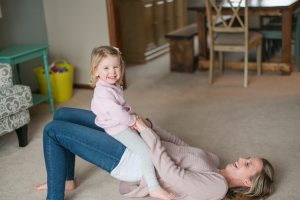
Needless to say, Julie is a wealth of information. During my time with her, I was able to decrease not only the width of my separation, but also the depth through improving the tension in my abdominal connective tissue. Through learning Julie’s breathing method, I’ve been able to learn how to manage my abdominal coning, and therefore increase my core strength and start to incorporate more challenge movements into my workout routine. Practically speaking, the work I did in my 4th trimester, and beyond, means I’m not peeing my pants when I’m running around the yard with my kids, my back isn’t hurting as much from nursing because my core is stronger, and I’ve been able to return to my pre-pregnancy workout routine stronger than ever.
If you’d like to work with Julie or learn more about her pre- and postnatal fitness programs check out her website. She’s also offering an Exclusive Discount to Columbus Mom readers. She’s offering 20% off TWO of her popular online courses: Pregnancy Power and Fourth Trimester Restore. Just use code columbuscollective.
